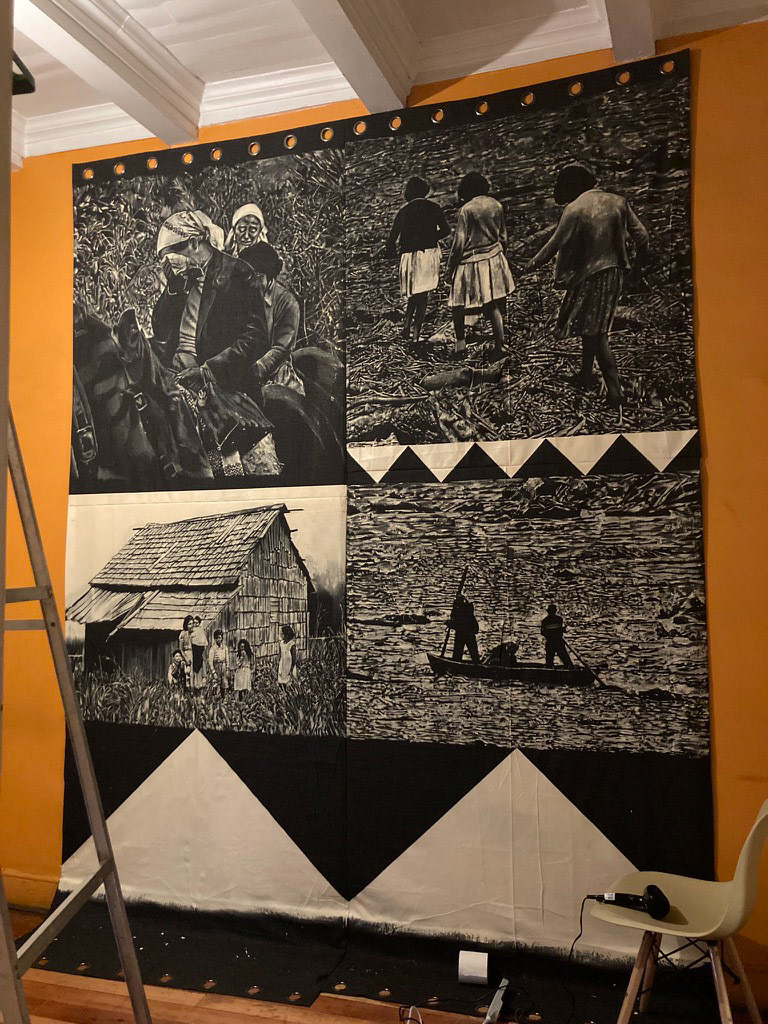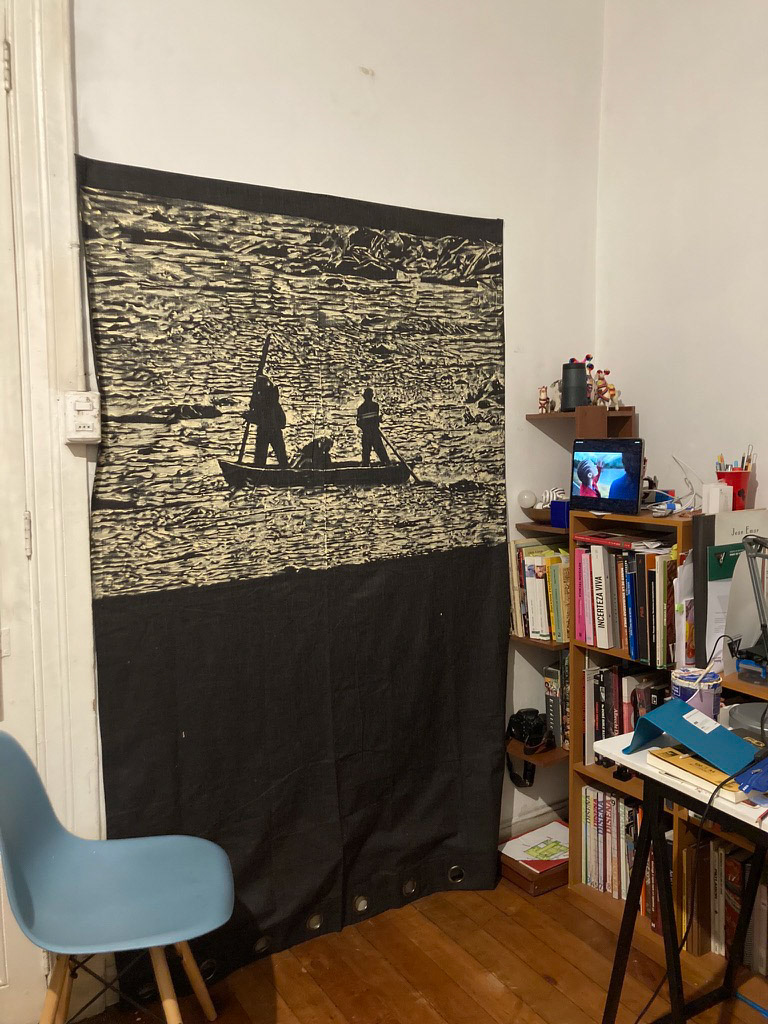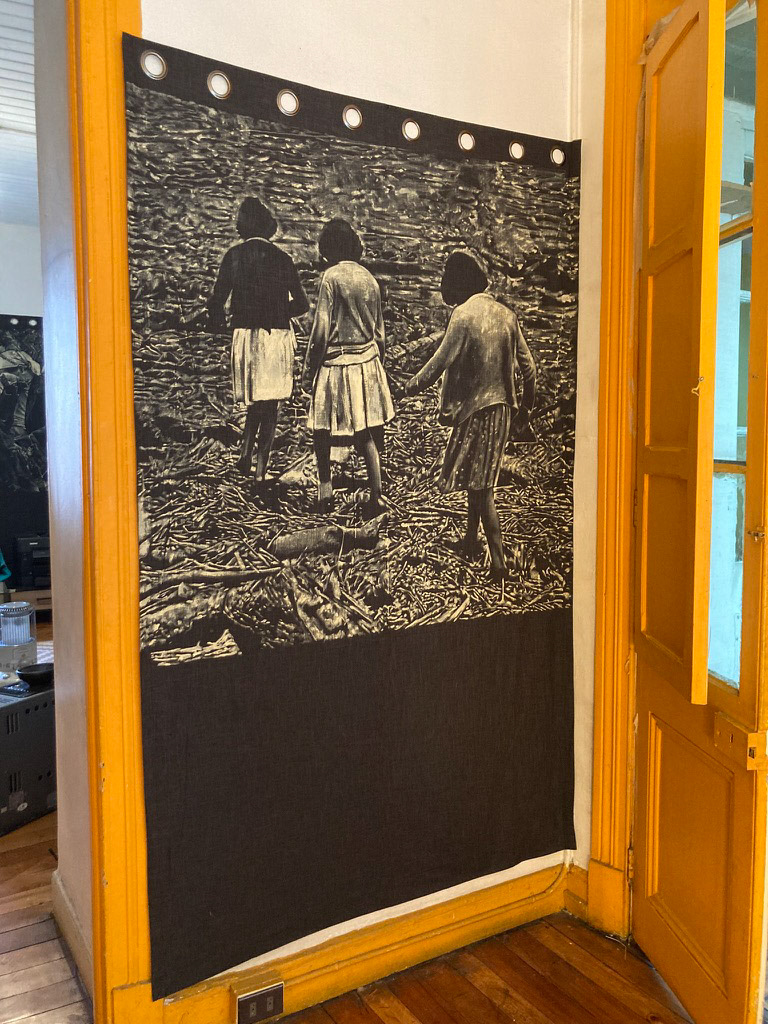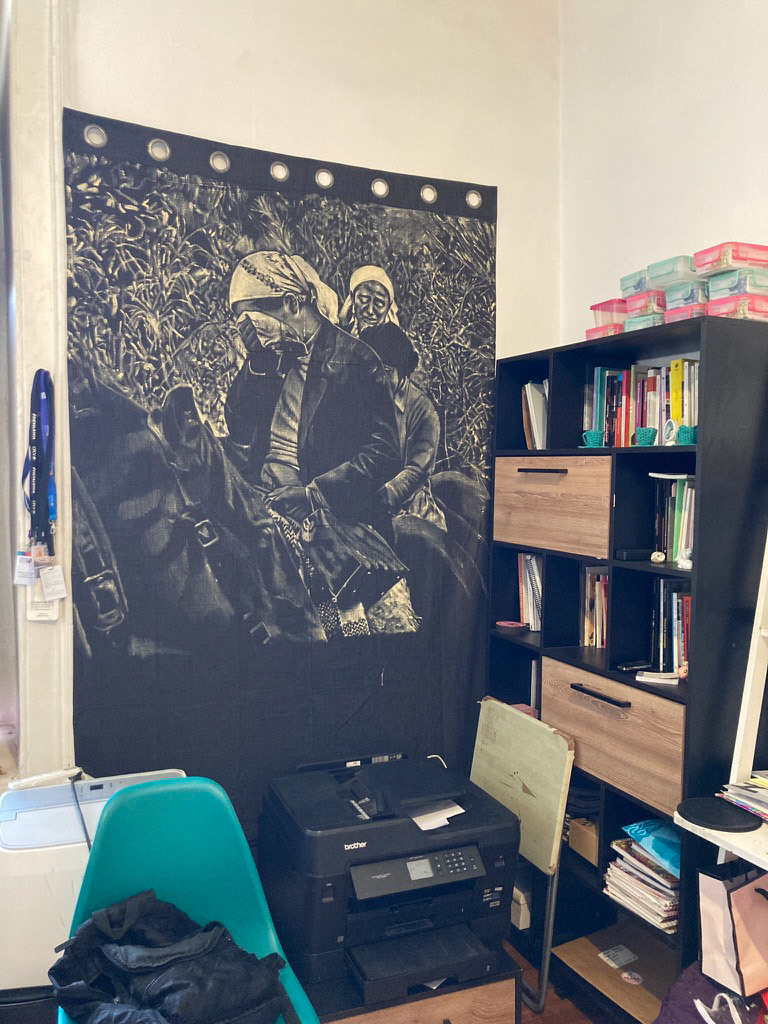2023
ES
Pintura de gran escala constituida por partes, fragmentos de telas cosidas entre sí. En su conjunto, conviven diferentes imágenes que articulan un discurso transpuesto y significativo sobre las memorias de la tragedia ocurrida en el lago Cabrera la madrugada del 19 de febrero de 1965 en la comuna de Hualaihué, Región de Los Lagos. Se trata de un alud en el que murieron entre 26 y 28 personas que vivían en las orillas del lago.
"Los ríos Blanco y El Azufre, que alimentan el lago Cabrera y que corren por una de las laderas del Yate, fueron tapados en su desembocadura por la masa del aluvión. Diego Paimán dijo:
– Aquí hay un peligro inminente, señores. Los ríos tendrán que buscar alguna salida, y esto puede ocasionar una catástrofe sin precedentes. En la zona cercana a los ríos Blanco y El Azufre viven muchos colonos, y, como es un valle con pastadas naturales, hay numeroso ganado y lanares. A la región del Yate tienen que venir técnicos y geólogos para estudiar científicamente esta jugada que nos ha hecho la madre naturaleza. ¿Cómo pudo suceder esta desgracia, si es lo único que tenemos? La voluntad de trabajo y nuestros bosques.
Los pies del presidente de los colonos, forrados con medias de lana y unos cueros de ovejas, se enterraban en el barro y la lluvia le apegaba el escaso pelo a su frente.
– Después del terremoto del año 1960 visitaron la zona unos geólogos japoneses. Luego de estudiar las materias del Yate, nos dijeron que el volcán entraría en erupción en 1965. Parece que se ha cumplido aquel ingrato anuncio.
Si estudiamos la naturaleza de nuestro territorio, nos daremos cuenta de que presenta una riqueza extraordinaria, que espera la mano del hombre para dar sus frutos. Sin embargo, bajo Su manto también se oculta la horrible cara de la muerte".
Texto e imágenes: Revista Vea (N°1348) el 25 de noviembre de 1965.
EN
Painting on a large scale composed of parts, fragments of fabrics sewn together. As a whole, different images coexist, articulating a transposed and meaningful discourse about the memories of the tragedy that occurred at Cabrera Lake on the morning of February 19, 1965, in the commune of Hualaihué, Los Lagos Region. It involves an avalanche in which between 26 and 28 people who lived on the shores of the lake lost their lives.
"The White and Sulfur Rivers, which feed Lake Cabrera and flow down one of Yate's slopes, were blocked at their mouth by the mass of the mudslide. Diego Paimán said:
– There is an imminent danger here. The rivers will have to find an alternative outlet, and this could cause an unprecedented catastrophe. Many settlers live in the area near the White and Sulfur Rivers, and since it's a valley with natural pastures, there is a considerable number of cattle and sheep. Technicians and geologists must come to the Yate region to scientifically study this move that Mother Nature has made on us. How could this tragedy happen when it is all we have? The will to work and our forests.
The feet of the settlers' president, covered with woolen socks and sheepskin boots, sank into the mud, and the rain matted his scarce hair on his forehead.
– After the earthquake of 1960, some Japanese geologists visited the area. After studying Yate's materials, they told us that the volcano would erupt in 1965. It seems that the unpleasant announcement has come true.
If we study the nature of our territory, we will realize that it holds extraordinary wealth, awaiting human intervention to bear its fruits. However, beneath its cloak, it also conceals the grim face of death."
Text and images: Vea Magazine (Issue No. 1348) on November 25, 1965.
“Peor que el de Coñaripe fue el aluvión del Yate” (2023). Esmalte al agua sobre tela. Diseño, corte y confección. 311 x 260 cm.


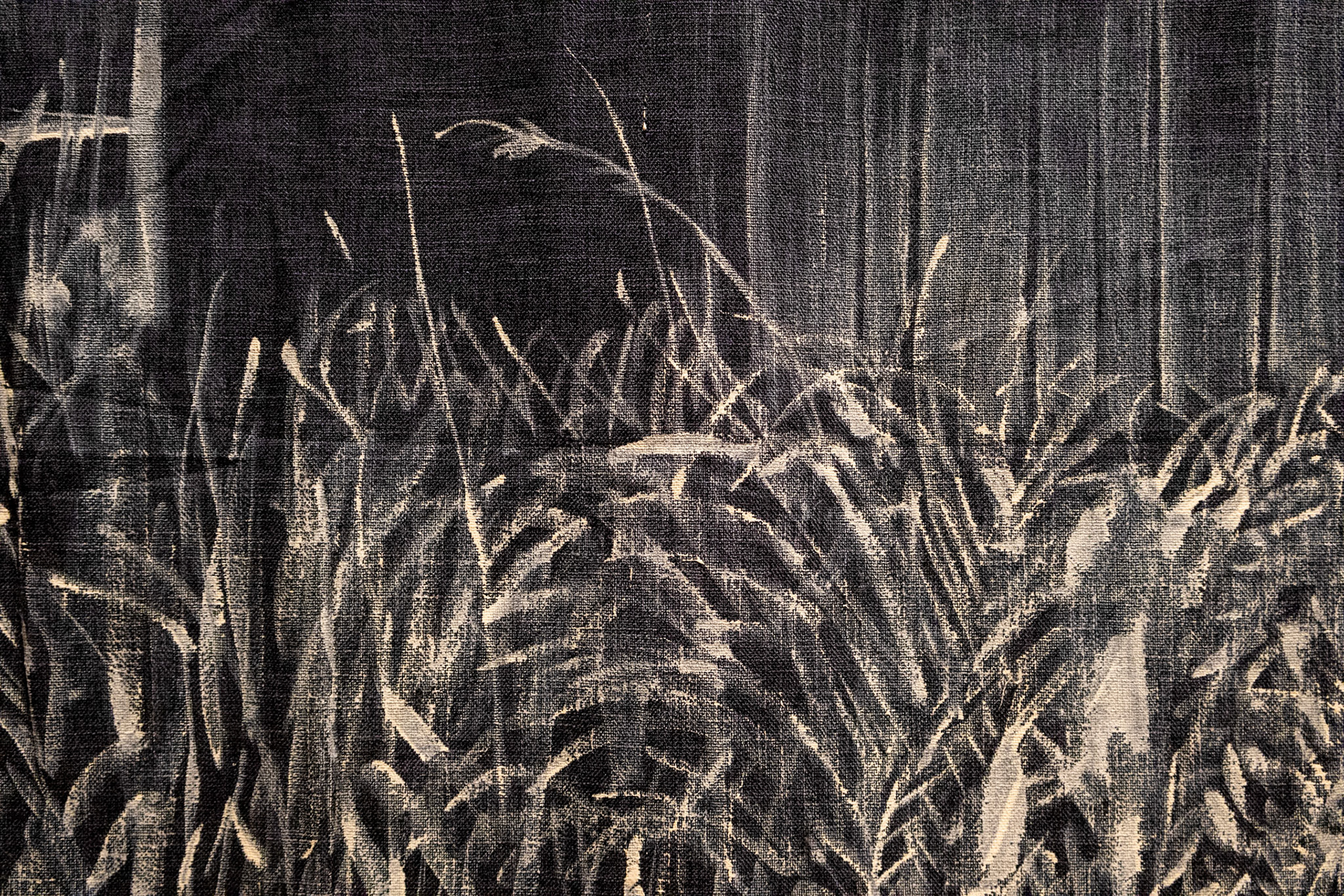


Detalles
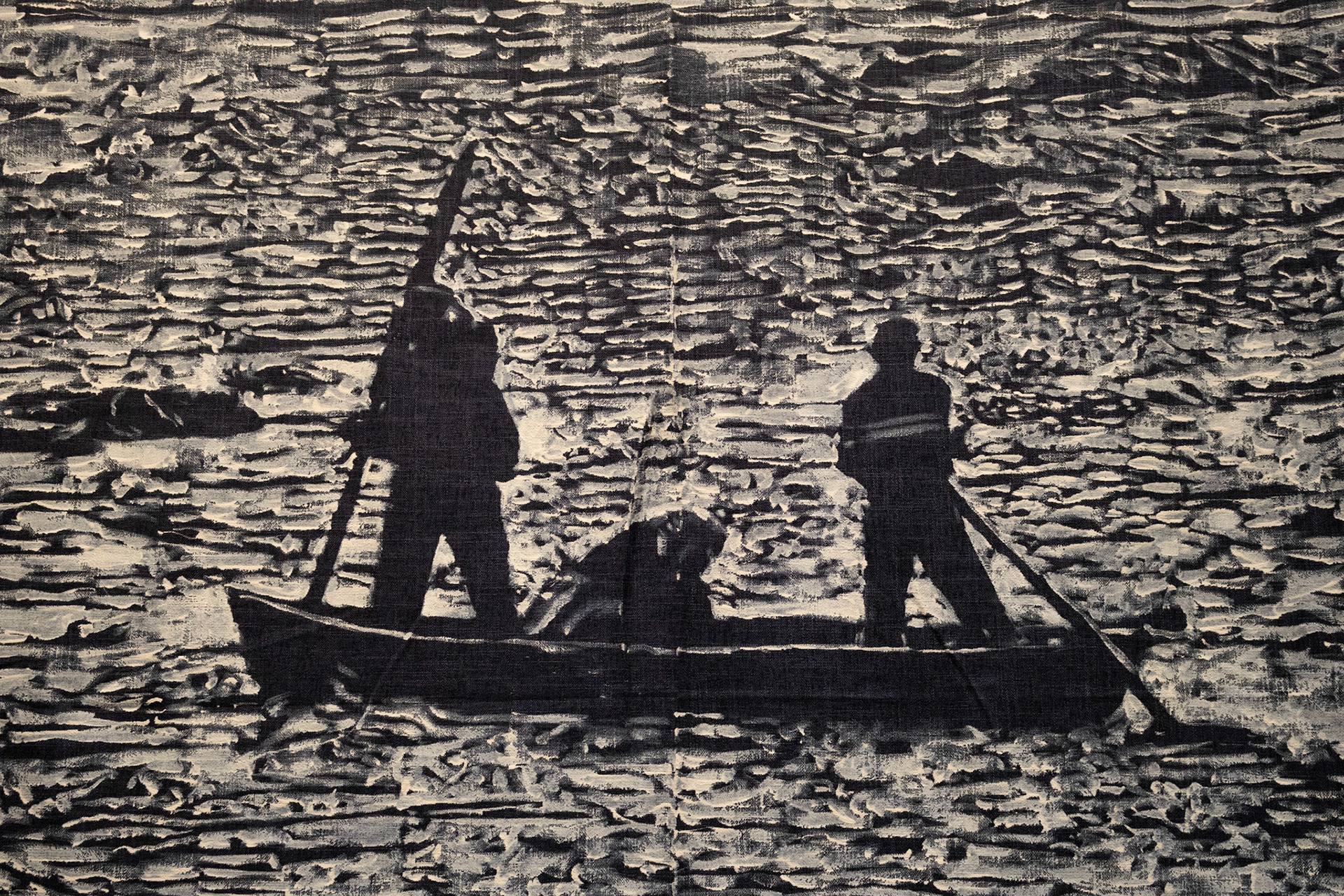
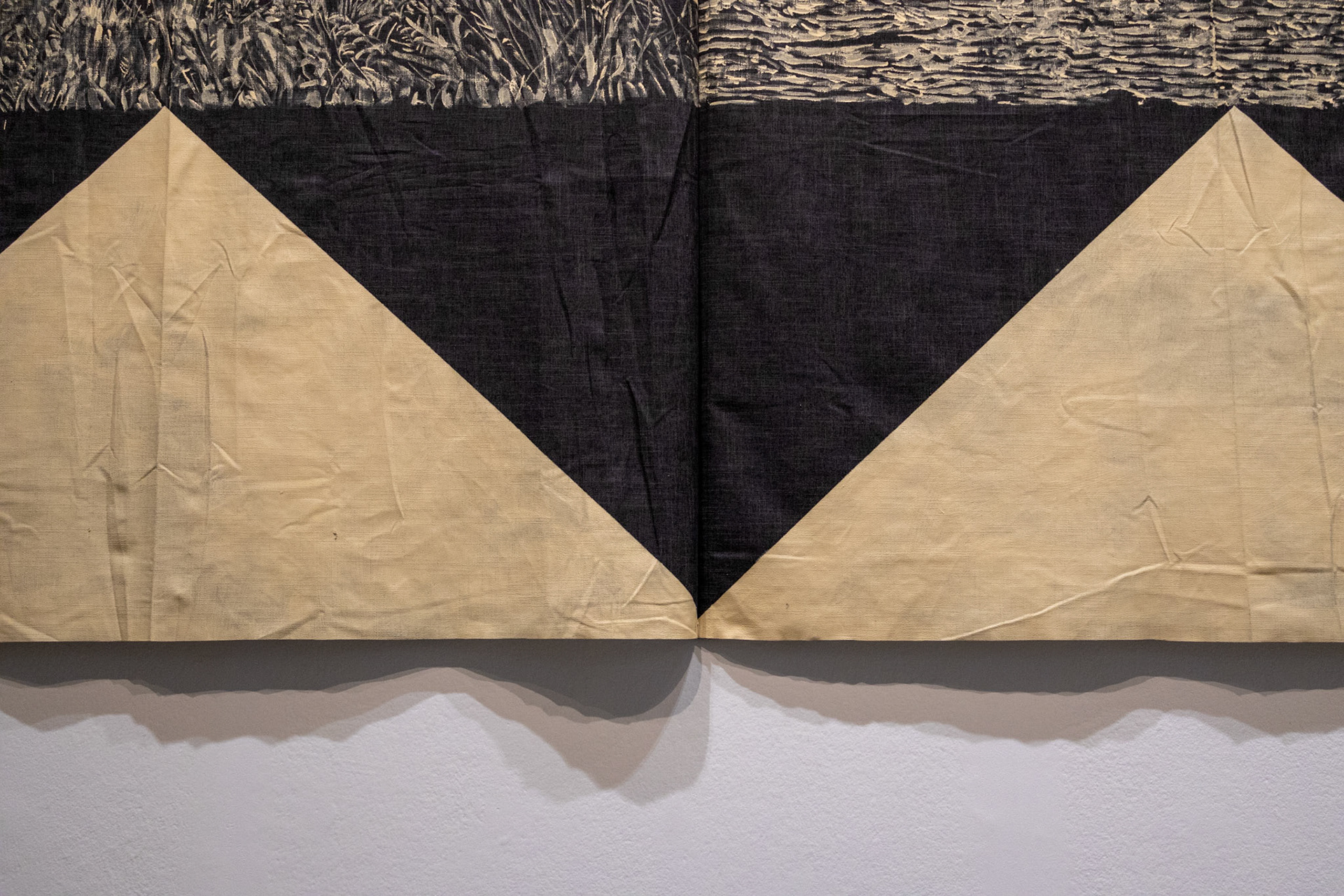
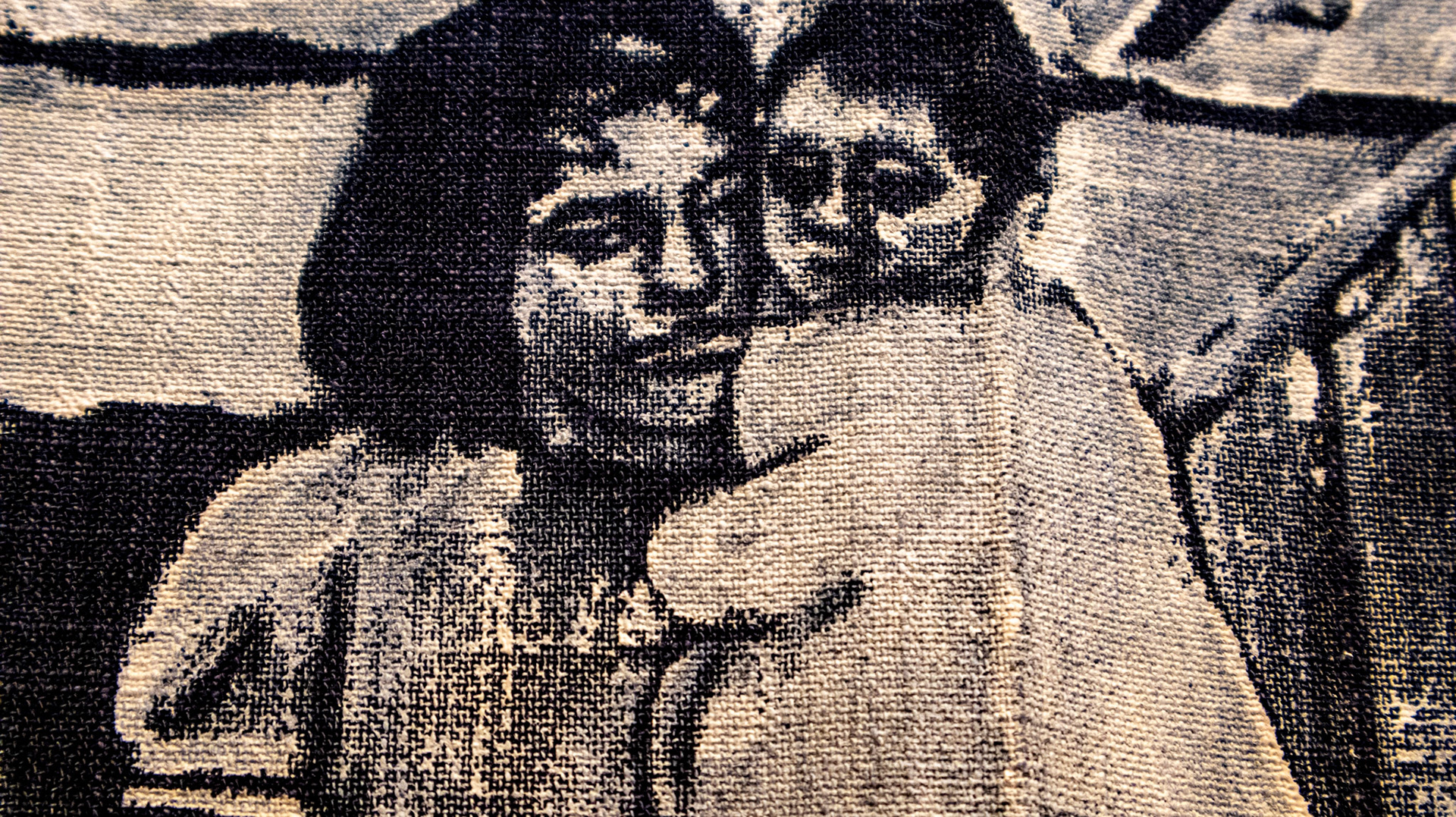

Archivo de trabajo




Proceso

